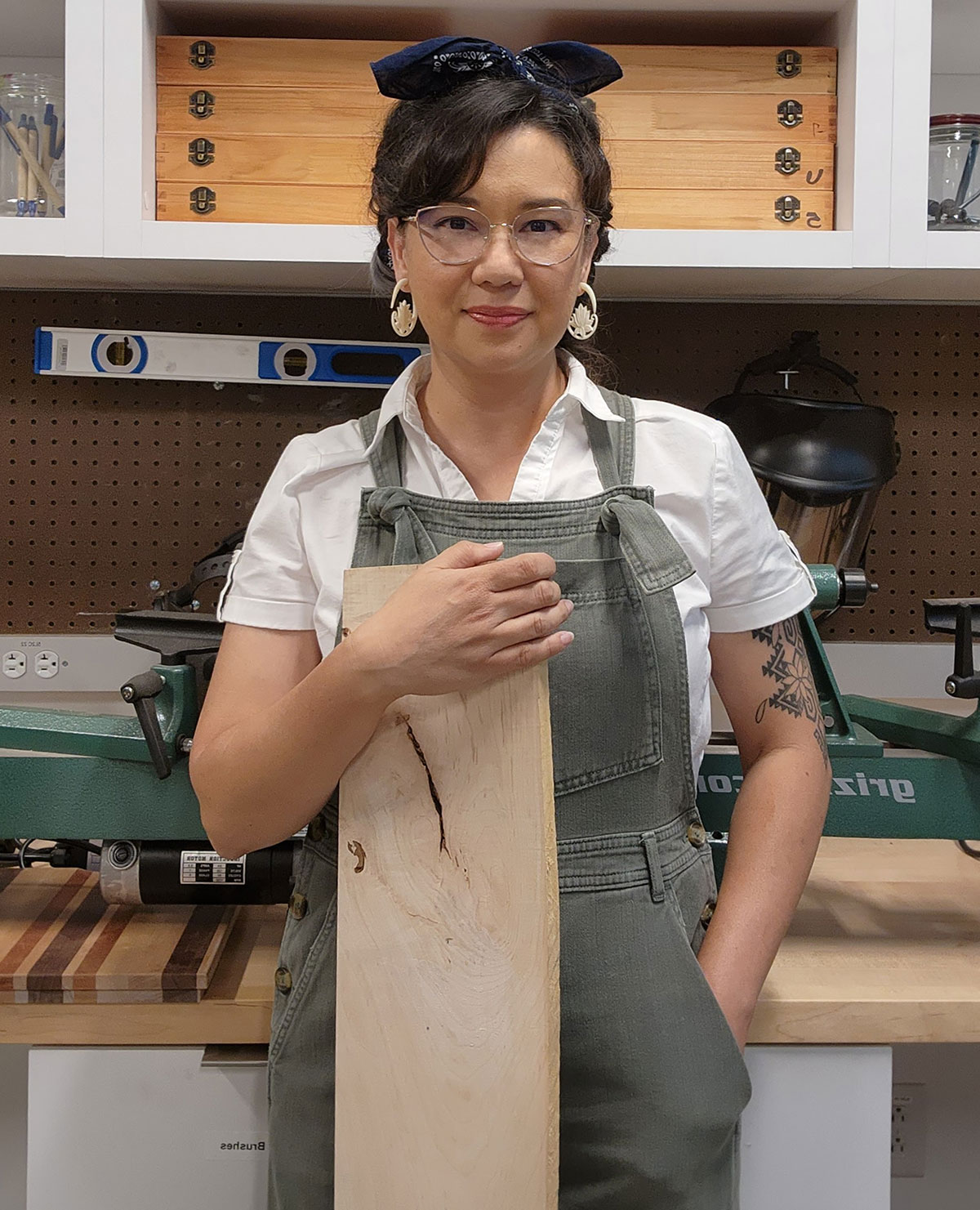 Website:
Website:
Biography:
Michelle Natividad Stein is a multidisciplinary artist with a focus on wood, ceramics and textiles. She is an MFA graduate from San Diego State University (SDSU) specializing in woodworking and furniture design. Michelle has a BA in Art and Applied Design with an emphasis in ceramic arts.
Michelle was an assistant teaching artist at ARTS, a non-profit organization empowering homeless and at-risk teens in the South Bay area. She has instructed classes in three-dimensional design, woodworking and ceramics at SDSU. Michelle received the SDSU Science and Engineering Art Award in 2020 and her work is in the School of Engineering’s permanent collection. She is also a recipient of SDSU’s Graduate Research Scholarship and the San Diego Art Council Ambassador’s Award. Michelle served on the Diversity and Inclusion committee for the School of Art and Design as well as the College for Professional Studies and Fine Arts at SDSU. She currently teaches woodworking and ceramics at UCSD craft center and will teach woodworking at Palomar Community College starting Spring of 2023.
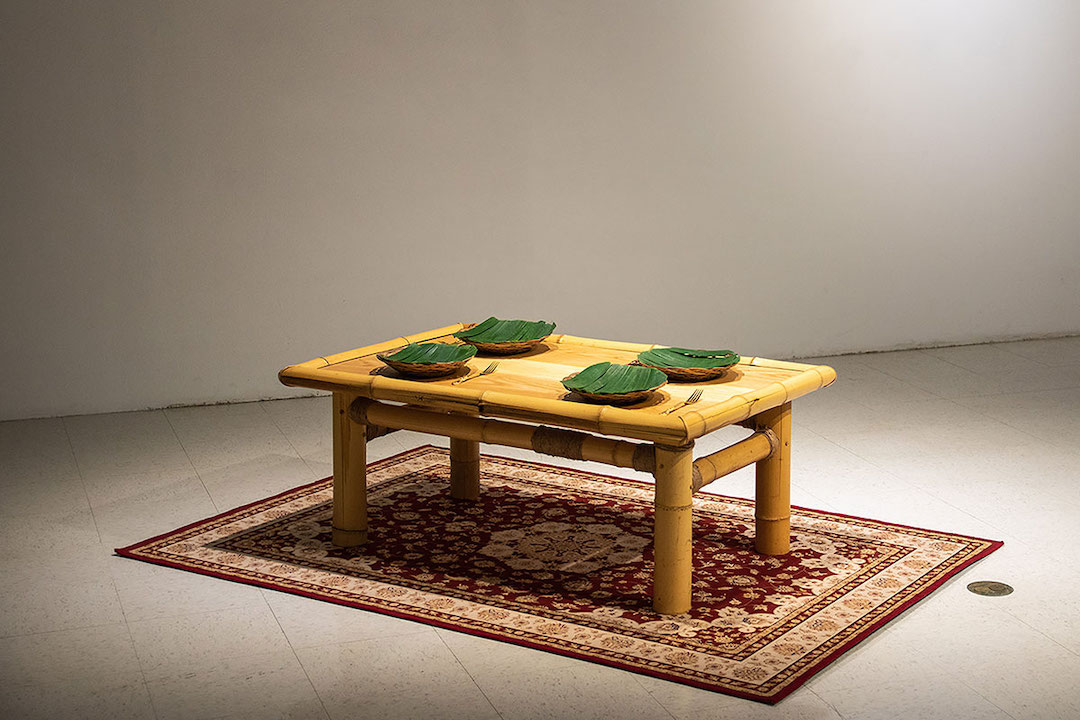
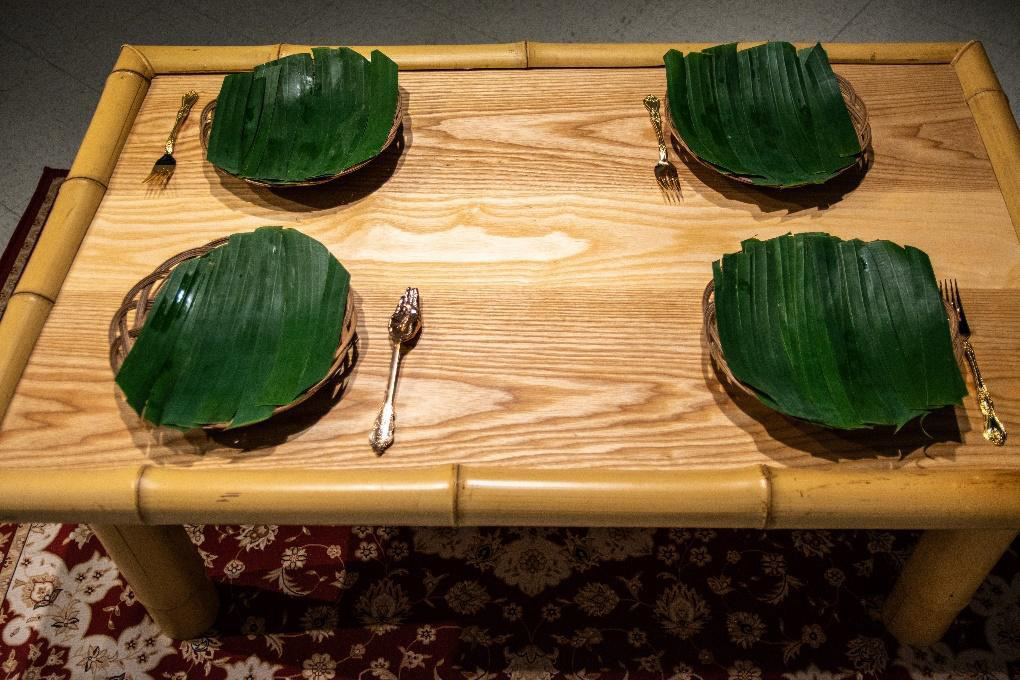
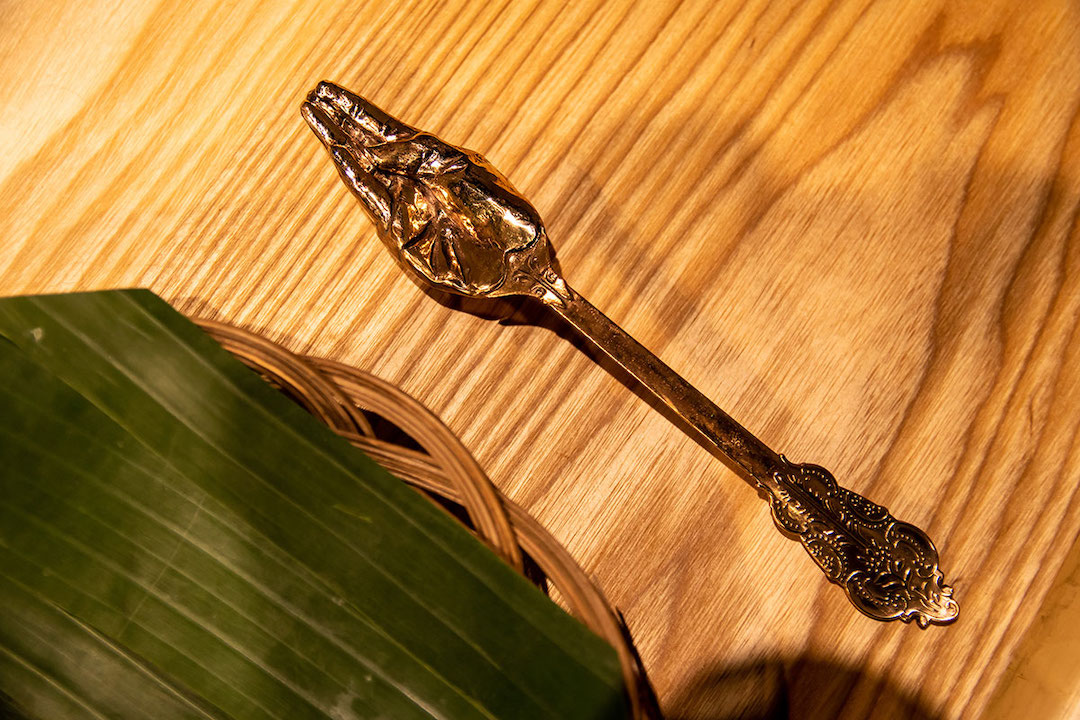
MIND YOUR MANNERS, SAY GRACE, NAGUGUTOM NA AKO
Found objects, bamboo, ash, bronze casted sculpture
48”x72”x18”
February 2021
$5,500
Mind Your Manners, Say Grace, Nagugutom Na Ako draws upon the feelings of nostalgia through the language of objects. I carved a miniature replica of my hand postured in the Kamayan style in jeweler's wax and casted that and the handle portion of a fork in bronze. This lone hybrid tableware is placed to the right of the plate. The three commercially made gold plated forks on the table are also placed to the right when forks are traditionally placed on the left according to Western etiquette. Kamayan is also the term applied to a feast in the Philippines when everyone is invited to dine at the table as equals, and food is placed and shared communally. Relationships are formed, and bonds are strengthened as everyone eats with their hands. I created a table framed in bamboo to symbolize Filipino culture. The table is short in stature, so everyone must sit on the red rug beneath it to partake in the meal. Plates have been replaced with banana leaf-lined woven wicker. There is a subtle play in the idea of materials and etiquette. For the Filipino population that understands the reference of Kamayan, there is a feeling of loneliness and displacement in the presentation and relationship of the objects.
PLAY THE GAME
Charred cherry, burned leather, velvet and found objects
54”x54”x36”
December 2020
$8,500
Play the Game embodies the ridiculousness of posturing within the Filipino American community. I constructed a mahjong table from charred cherry and preserved the subtle shimmer of the charcoaled surface. The swirling reflections of black reminded me of the fierce and proud roosters my grandfather raised. Artist Jerome Navares illustrated the center of the table. I burned the tattooed pattern and roosters into the flesh-toned leather to represent kapwa.
Around the table are upholstered red kneelers, of which three players would prostrate themselves to play the game. The fourth player uses the kneeler as a footrest and uses the only chair. This arrangement describes the colonial mentality and internal oppression within the Filipinx American population. Self-appointed successful members of the community now act in place of the colonizer to gatekeep unwanted indigenous mannerisms.
UNPACKING THE NATIVE
Found objects, banig mat, ash, fabric 60”x 48”x 22”
February 2020
$4,500
Beauty is a social construct. As a Filipino American teen, there was this confusing dichotomy of magazine beauty standards and Filipino home remedies. I gravitated towards things that granted me acceptance by my non-Asian peers while secretly practicing the rituals of nose pinching and rubbing my skin with calamansi.
The unpacking series is comprised of three suitcases (two shown here) and explores the construct of beauty through a decolonized lens, celebrating the ancestral, the ritual and recognizing the harmful.
Unpacking the Native is the first in the series. The colonial ritual of tattoo or batok for women was a mark of beauty, identity and blessings from nature. The suitcase is reconstructed as a traveling curio with matching ceremonial mat to perform the right of passage.
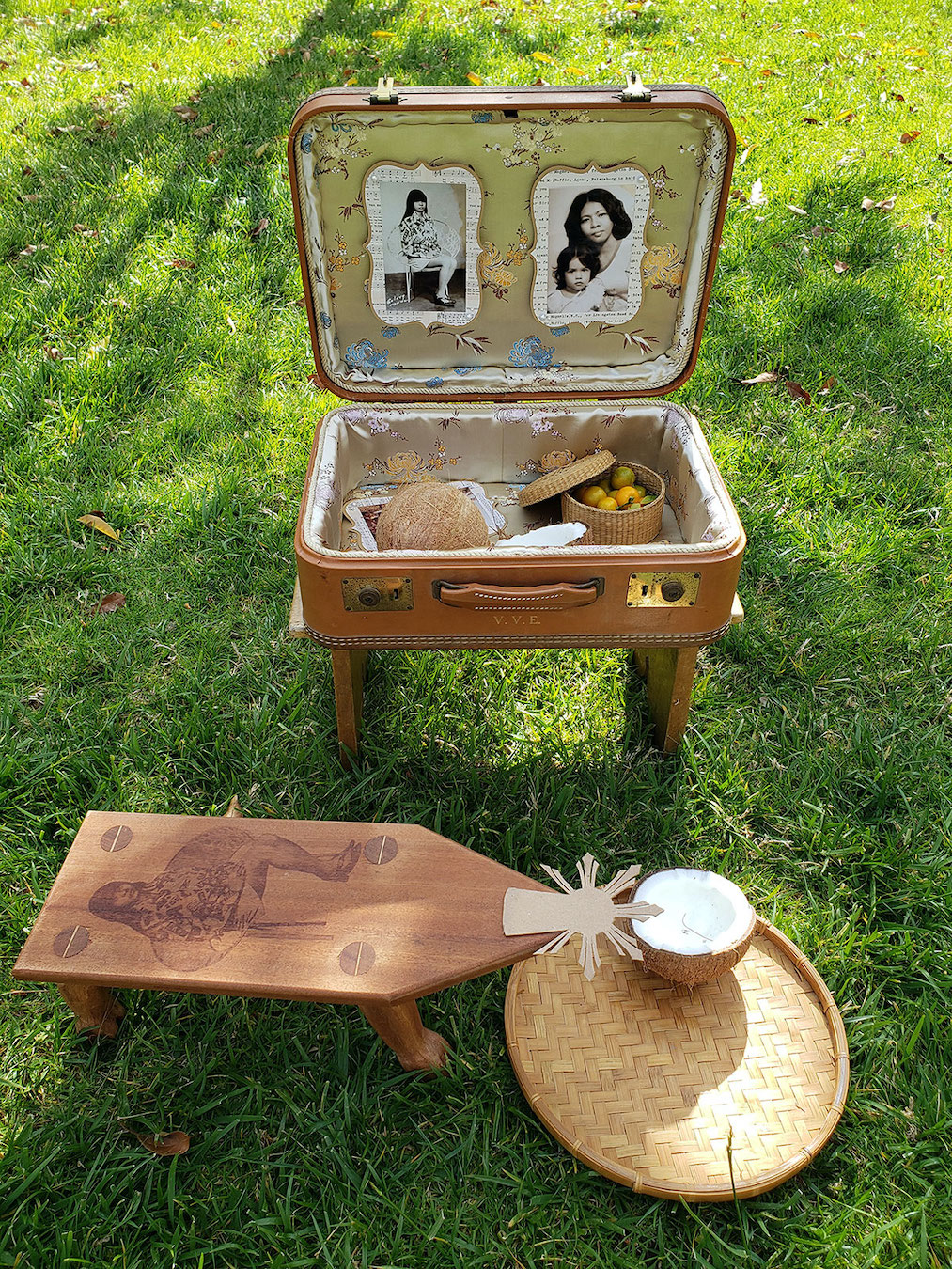
.
UNPACKING THE MATERNAL BEAUTY
Found objects, vintage photos, fabric, mahogany, brass
36”x36”x26”
March 2020
NFS
Unpacking the Maternal Beauty represents the Pinay rituals my mother practiced in her generation. The altar-like presentation pays respect to traditional beauty remedies while recognizing the influence of Western pop-culture. The caballo and woven tray with coconut are poised as instruments of ceremony.
 Website:
Website:


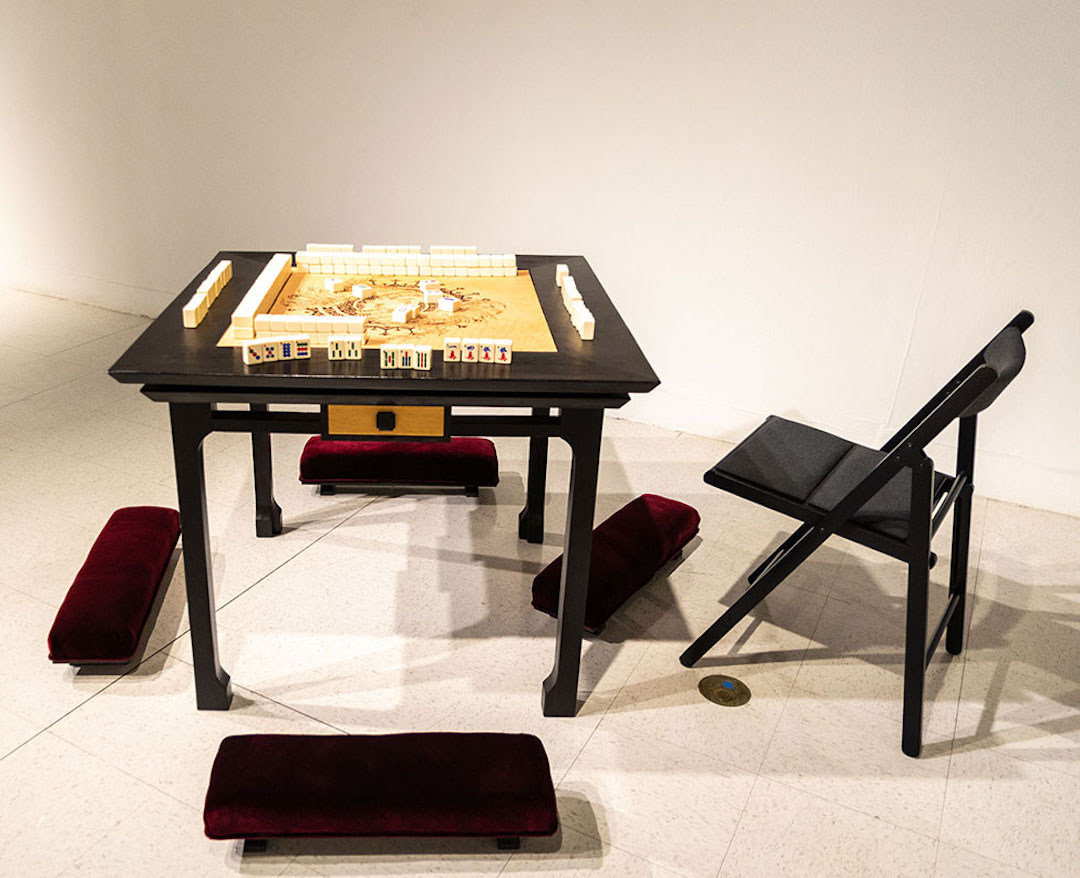
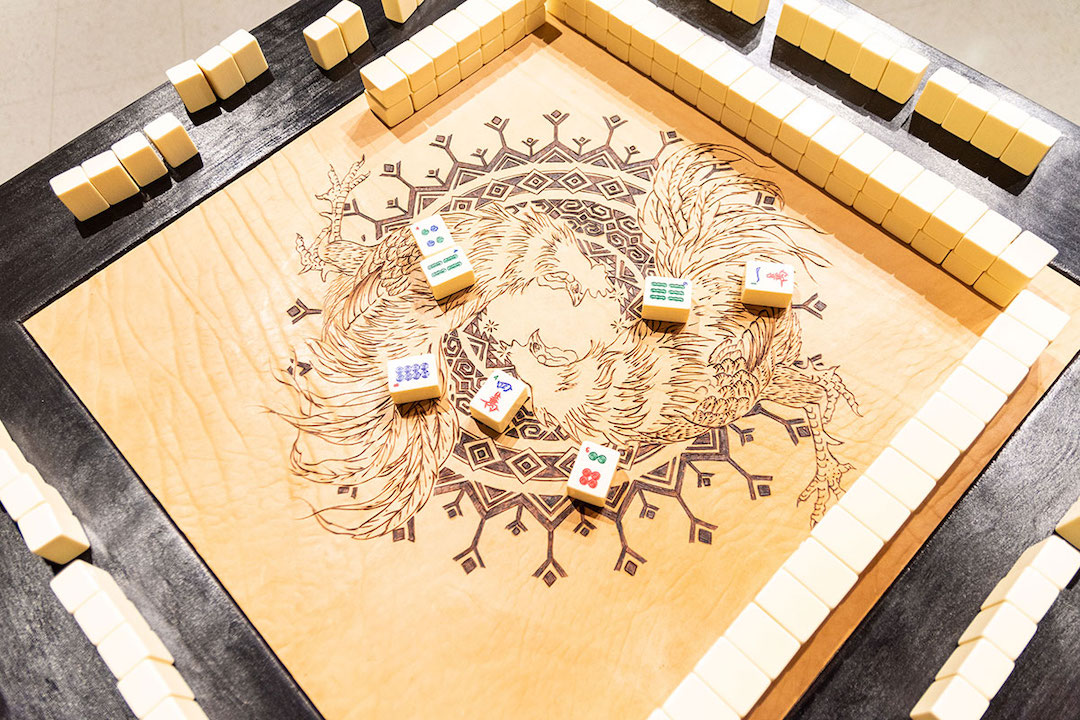
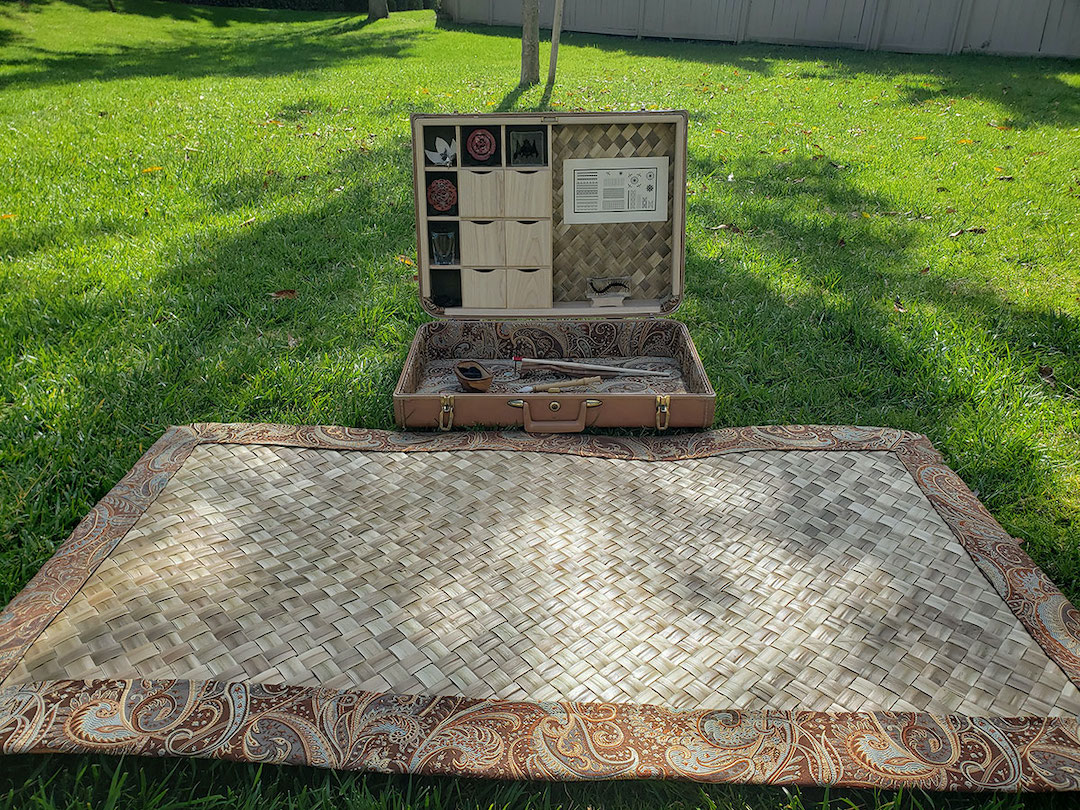
 .
.





